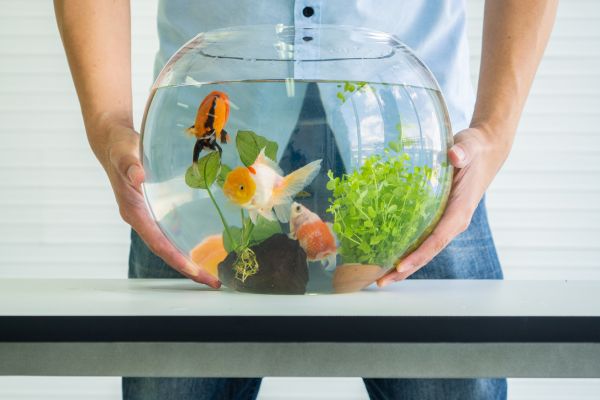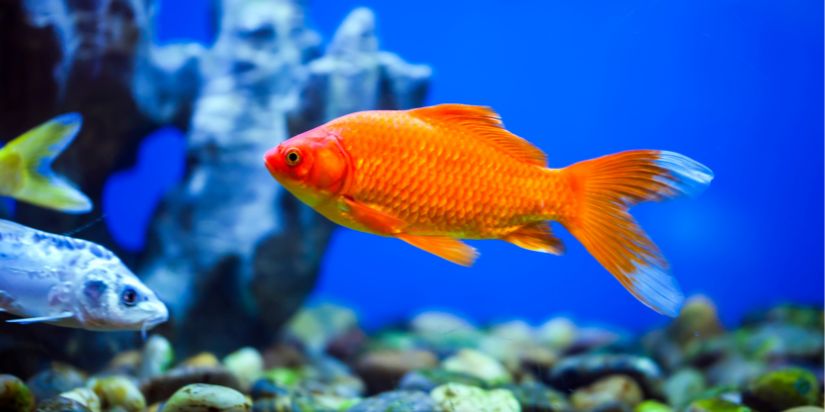We love many things about aquariums—the vibrant colors, the soothing ambiance they lend a room and the joy of watching living things grow as you feed and care for them. But we enjoy few things more than seeing fish, coral and other aquarium livestock interact in a dynamic setting.
An ideal aquarium is one where fish playfully dart around and hide in all the nooks and crannies while coral shifts and grows as part of a changing landscape. At the same time, invertebrates dig through the sand and climb through the reefs. Every hobbyist’s greatest dream is to create an aquarium community where every member interacts with others like cogs in a larger whole. Unfortunately, encouraging such interaction can sometimes be challenging…
There are thousands of species of fish, coral, and other organisms you can use to populate your aquarium. But not all of them are equally compatible.
While some creatures will share space and coexist peacefully, others will exhibit aggression and territorialism. They may even attack and kill each other. A lot of care needs to be put into the composition of your tank to ensure not only the safety of its inhabitants but also to encourage interaction among them.
Here are some basic guidelines to help start your efforts to build a dynamic, lively aquarium.
Aquarium Interaction According to Species
The first and most obvious factor affecting the interactions within your aquarium is the makeup of the creatures populating it. Many of your tank’s inhabitants interactions are largely based on the inherently existing relationships between their species. This presents challenges as you handpick each species you introduce into your aquarium.
Fish Compatibility
Luckily, many sources provide handy compatibility charts laying out the relative compatibilities of different types of fish. Ensuring compatibility is crucial, regardless of whether you’re populating a tank with freshwater aquarium livestock, tropical fish livestock or something else entirely.
Generally, you want fish that can stand on equal ground without direct competition. This means finding fish that:
- Are species of similar sizes so they can’t bully one another as much
- Possess similar behaviors for the best chance at harmonious living
- Occupy different swim levels in the aquarium so they aren’t competing for the same space
- Are different colors so they aren’t competing for the same hiding spots
There are a few fish species that are naturally aggressive, so you’ll want to avoid these in group tanks. Examples of fish that are best on their own (or, sometimes, in breeding pairs) include Exodons, Oscars, Peacock Bass, Midas Cichlid and Pike Cichlid. Other aggressive fish species you may want to avoid include Betta, Tiger Barb, Red Tail Shark, Dwarf Pea Puffer and Arowana.

Coral Compatibility
Coral provides constantly shifting spaces for your fish to hide in and interact with, making them a crucial aspect of any aquarium. However, many species have long, sweeper tentacles that can reach neighboring corals and sting them. These stings can damage and possibly kill coral with necrosis-causing nematocysts. Some corals, like Rhizotrochus typus, can even devour whole fish.
You don’t want to turn your aquarium into a warzone. Not only would this be overall devastating, but you’ll also cause unnecessary stress for any surviving fish or coral. Before filling your tank with too many aggressive coral species, learn how each species defends its space. It’s also crucial to know the rate at which it expands and the environment necessary for it to thrive.
Proper Allocation of Resources
How an organism behaves in your aquarium involves more than just its species. While species influence how the individual acts, the environment change from the wild to your aquarium can profoundly impact its behavior. When displaced into an unfamiliar environment with limited space, food, and mates, a relatively docile fish in the wild can become far more aggressive. That’s why proper allocation of resources becomes essential in discouraging violence and encouraging positive interaction.
The key to maintaining healthy activity in your aquarium is ensuring all organisms get ample and varied resources. You don’t want your aquarium livestock fighting over food or territory. But you also don’t want them to become so bored they start picking fights, either.
Sex Ratio
For fish and other creatures, you should retain a proper sex ratio for that species. This is a great place to start because it discourages situations like a group of males attacking others to defend their claim on a limited number of females.
Varied Feeding Schedule
A sufficient but varied feeding schedule is also key to resource allocation. Of course, you should ensure your livestock has enough to eat so they aren’t in vicious competition. But you should also consider varying your times and locations of feeding, dropping food in at different points. This keeps a small subset of fish from dominating the feeding points and encourages the fish to move throughout the aquarium, exploring different sections.
Appropriate Space
A key thing to remember is that just because you can fit a certain number of fish in an aquarium doesn’t mean you should. Each fish species has different space requirements, and you’ll want to keep this in mind when deciding how large your aquarium needs to be.
An excellent example is the common goldfish. On television and in many people’s homes, you see these fish stored in small bowls of water. This is a big no-no! Did you know the consensus is that a single goldfish needs a 20-gallon tank, and each additional fish needs 10 gallons of water?
If you were hoping for a simple, basic tank to house five adult goldfish, you’d need at least a 60-gallon tank. Of course, it doesn’t hurt to size up a little to give all your aquarium livestock enough space to grow, interact and thrive.

An Engaging, Balanced Layout
Another important way to encourage your livestock to move throughout the aquarium and balance their interactions is in the physical layout of your aquarium. An overcrowded tank pits livestock against each other. On the other hand, a tank that doesn’t change lets them grow reclusive, so you have to balance these elements to establish an active environment.
Coral Consideration
The organisms whose interactions are most dependent on layout are corals. Their growth patterns depend largely on the texture and form of the rockwork they grow onto. This means the shape and spacing of the areas where you place your coral will dictate whether they come into conflict. It’ll also dictate the structures they form for other creatures to interact with.
Consider positioning your coral so they have enough space and resources without competition. For example, plate corals like Montipora capricornis can grow to cast shade on the aquarium’s lower levels, depriving shorter coral of much-needed light.
Layout Variations
It’s wise to occasionally vary the layout of your aquarium, changing and adding new elements. This keeps your fish and other aquarium livestock from growing sedentary, keeping to their little holes and corners. It encourages them to continue actively exploring the aquarium as they encounter new elements, the same as they would in the wild.
Varying the layout has the added benefit of shaking up their territories, forcing them to keep reestablishing their home spheres and keeping individuals from territorial dominance. For this reason, it’s recommended you alter the environment every time you introduce new organisms. Doing so ensures all aquarium livestock are on equal footing with the existing inhabitants and have a chance to integrate rather than be bullied into submission.
Need the Perfect Tank for Encouraging Aquarium Livestock Interaction?
By following these guidelines, you can encourage your aquarium livestock to coexist peacefully and explore and interact freely with the home you’ve made for them. Of course, the best way to promote aquarium livestock interaction is with the solid beginning a customized aquarium can give you. When you choose a custom fish tank, you can ensure the size and shape are ideal for the habitat you hope to create.
Have more questions about aquarium livestock interaction? Ready to design the perfect tank for achieving these goals? Living Art Aquatics is ready to help! Give us a call or contact us online to learn more about how we can help!
Editors Note: This blog was originally published in June of 2016 and was updated in January of 2024.





